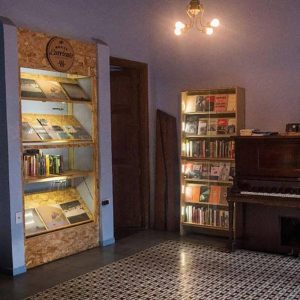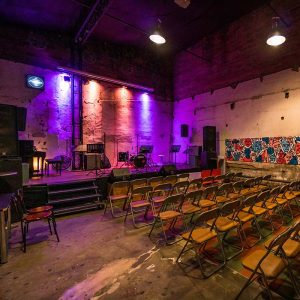I have always liked walking down the street. Wander aimlessly, pay attention to the details of the city or let your imagination run wild until the buildings and sidewalks disappear. I convince myself that I know Valle de Aburrá well, of course not everything, but I do know the most frequented neighborhoods. When Andrés invited me to his tour of the center, I assumed that there was going to be nothing new for me. How wrong was I, I was a tourist through Medellin.
At eight o'clock at night, after, we met in the Salón Málaga. I sat down and the waitress arrived with three beers and two glasses of rum on the tray. He poured the three bottles and continued with the glasses. Disillusionment, I thought that my companions were going for the cane, but I did not stay with the craving and I asked for my rum. The music made it difficult to understand each other when we spoke, but it was better that way because we could concentrate on the atmosphere of the place; I particularly noticed the black and white photos from the beginning of the last century on the walls. "Where is that church? I thought it was the one in the Rionegro park but that's not on a corner,” I told Andrés. “That's Parque Berrío,” he replied, not Parque de Berrío, which is what only the voice that announces it on the subway tells him.
When Andrés invited me to his tour of the center, I assumed that there was going to be nothing new for me. How wrong was I, I was a tourist through Medellin.
The music stopped and the man who was singing said that he was leaving, to which the audience that occupied almost the entire venue responded with a long and emotional 'nooo'. "But it's that if they don't applaud you think you're boring them" and a noise took over the place, forcing him to continue with his songs. Tangos, boleros, cumbias, porros, salsas and even vallenatos for birthdays, and dance by the most diverse couples wherever you look. At one point, one of the customers took over the microphone and shared a tango that many of the guests knew, I must say that he received an ovation. And the party was going to continue.
We left Málaga towards the northeast, crossing the Parque de Berrío, admiring the church that we saw in the photos, and commenting that in the early years, when Medellín was still a town, that was the main square. After a few blocks we arrive at La Casa Centro Cultural, whose door has not been closed once in the 17 years that it has been in operation, since it is open 24 hours a day. It is a construction of more than 90 years, designed by the Belgian architect that most of the upper class of the time hired for their houses. I don't remember the name now. The building was recently declared an architectural heritage of the city, which I found funny and ironic, taking into account the neon signs of the commercial premises that operate on the first floor.
On the second floor, following wide stairs, proportional to the size of the mansion, there is an internet cafe, a bar and a performing arts collective. The internet cafe has a peculiarity, something I've never seen before: computers in private cubicles, explicitly offered to consume pornography and masturbate in peace. As for the bar, there is cultural programming that rotates every month. There was nothing special that day, but we were invited to the clown show the next day. The last attraction of La Casa is the small balcony, from which you could originally see floats go by and now just buses and cars, and with luck, the restaurant that is across the street.
The third place we visited was the only one I already knew, there I was seeing Providencia, a reggae band, and Almost Blue, a mix of rap and jazz, both from Medellín. It is about La Pascasia. It is also a cultural house: it has an art gallery, a reading room with its respective club and an auditorium for musical shows in which they allow presentations of as wide as the spectrum of genres can be. In addition, they also have a bar and sell empanadas, chicken cakes and sandwiches. This cafe, bar, gallery, auditorium, patch, seems to me an excellent example of art talking about itself. What I mean is that it is a space where local musicians meet to consolidate their projects, where they have a record label and a small literature bookstore, with an emphasis on independent Colombian publishers. Thus, La Pascasia is the center of operations. So, we leave behind the books on the shelves, the instruments on the backs of their performers, the paintings on the wall, and we go out into the street in search of the last stop.
We arrive at Homero Manzi, a bar named in honor of an Argentine tango composer, located on a dignified corner of La Boca or San Telmo. The local speakers were blaring as we sat down, and the moment our first rum was served, the music stopped. A few seconds in silence, which are interrupted by the wailing of a bandoneon player at the table next to ours. One more table completed the audience, which despite being small was worthy of the show. Two voices accompanied the melody, one from a tanguero in a tailcoat, who I later found out sings on Saturdays at the Salón Málaga, and the other from who seemed to be his friend. One song after another and we didn't want to leave. Applause at each pause, and more rum. When I finally went out into the street, I realized that I had been another tourist in the city of Medellín.
Written by Martin Lacoste @martaveno



